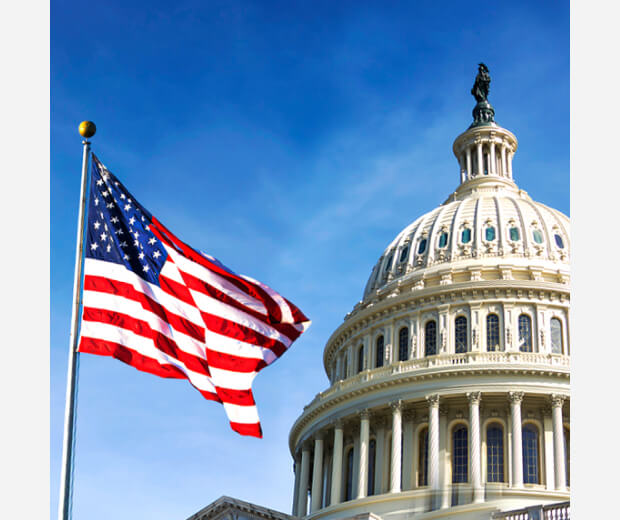SECURE 2.0 Act of 2022 Summary and Guidance
SECURE Act 2.0 passed, and this law adds over 90 new provisions to help Americans save through employer-sponsored plans. ADP is here to help you learn about the ins and outs of SECURE 2.0 and how businesses can take advantage of increased tax incentives.

What is the SECURE 2.0 Act?
The SECURE Act 2.0 is a rule established in 2022 that makes most companies enroll eligible employees for the company's retirement plan automatically. Starting in 2025, Section 101 requires that employers establishing a new 401(k) or 403(b) plan enroll eligible employees automatically, with a contribution rate of at least 3%.
Trending resources
Stay informed about today’s major issues, ensuring you’re ready for tomorrow’s challenges, including updates on spending bills and retirement plans.

Webinar
SECURE 2.0 Act Update: Receive practical advice and best practices
Article
SECURE 2.0 Act Makes Sweeping Changes to Retirement Savings Plans
Article
New RMD Provisions: A Closer Look at What's Changing with SECURE 2.0
Article
SECURE 2.0: New Small Business Tax Incentives for Retirement Plans
Article
SECURE 2.0 Act: What it Means for Your Business
Article
SECURE 2.0 Act and the Future of Retirement Plans: Guidance for Plan Sponsors
Article
NASDAQ: What You Need to Know About SECURE 2.0
Article
SECURE 2.0 creates new retirement saving incentives for employers and employeesSECURE 2.0 Act FAQs
What is the SECURE 2.0 Act summary?
In summary, the Secure Act 2.0 is a federal law that was enacted in 2022 and has added provisions to expand access to retirement plans through automatic enrollment, expanding and matching contributions.
The SECURE 2.0 Act is designed to encourage more employers to offer retirement plan benefits and more employees to participate in saving for their future. The law does so by updating and adding new retirement account provisions. Highlights of the Secure Act 2.0 include:
- Automatically enrolling eligible employees
- Expanding catch-up contributions
- Allowing participants to withdraw up to $1000 penalty-free for emergency expenses
- Allowing matching contributions for student loan payments
What incentives does SECURE 2.0 Act offer small businesses?
If your small business doesn't currently offer retirement benefits, you could be missing out on major incentives. Many provisions include tax credits to offset the administrative costs of setting up and maintaining retirement plans. For example, small businesses with up to 50 employees can receive tax credits for up to 100% of plan start up and administrative costs for the first three years,* as well as up to $1,000 per employee earning $100,000 or less in additional annual tax credit for employer contributions to defined contribution plans.
* Up to the greater of $500 or $250 times the number of eligible non-highly compensated employees up to $5,000 (minimum $500).
How have Roth contribution rules changed under the SECURE 2.0 Act of 2022?
The SECURE 2.0 Act impacts Roth contributions in several ways. Two important changes you need to be aware of are:
- Effective January 1, 2026, all catch-up contributions to employer-sponsored qualified retirement plans for participants earning more than $145,000, will be made on a Roth basis.
- Employers may permit employees to elect that employer matching and Non-Elective Contributions be treated as Roth contributions.
How does SECURE Act 2.0 better help employees save for retirement?
SECURE 2.0 helps employees save in a number of ways:
- Increases the annual catch-up contribution amount for participants ages 60-63 to $10,000, beginning in 2025
- Increases the age for required minimum distributions from 72 to 73 in 2023 and up to 75 in 2033
- Expedites eligibility for long-term, part-time workers to participate in a plan after two years
- Employers are able to match their employee’s student loan payments within their retirement plans enabling employees to save for retirement while paying down their student debt
When will provisions of the SECURE Act 2.0 take effect?
SECURE Act has over 90 provisions of the SECURE Act 2.0 will provisions with various effective dates ranging from 2023 through 2027. Many provisions of the SECURE Act 2.0 will become effective in 2024.
How does the SECURE 2.0 Act of 2022 impact RMDs?
SECURE 2.0 Act increases the age requirement for participants to begin taking a Required Minimum Distribution (RMD) from 72 to age 73 in 2023, increasing to age 75 in 2033.
What is the student loan matching provision?
This optional provision took effect January 1, 2024 and allows employers to make matching contributions into a retirement plan based on an employee’s qualified student loan payment. The contribution cannot be higher than any regular matching contribution limits under the plan and the employee must be eligible for matching contributions under the terms of the plan.
What does Secure 2.0 have to do with 401(k) plans and social security?
SECURE 2.0 Act is broad legislation designed to help Americans save for their future through provisions that aim to expand access to retirement plans, increase savings opportunities for employees and streamline administration of employer-sponsored retirement plans, including 401k plans. The SECURE 2.0 Act does not address social security reform within any of its provisions.
What is the SECURE 2.0 Act?
One of the provisions of the SECURE 2.0 Act of 2022 focuses on automatic enrollment as a requirement for retirement plans. Starting in 2025, Section 101 requires that employers establish a new 401(k) or 403(b) plan and enroll eligible employees automatically, with a contribution rate of at least 3%.
How does the status of SECURE Act 2.0 change 401(k) plans?
SECURE 2.0 has multiple provisions that impact 401(k) plans and deal with issues including tax credits for employers who offer a retirement plan, financial incentives to contribute to a retirement plan, student loan matching program, hardship withdrawal rules, contributions limits, and part-time worker access. One major change is that employees must be automatically enrolled in plans with a minimum 3% contribution.
 Student loan matching
Student loan matching







